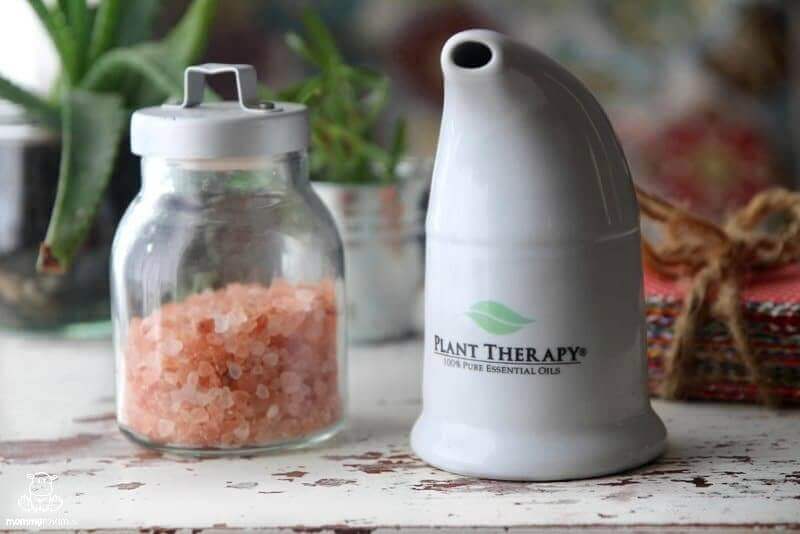
You’ve probably heard before about doctors sending patients to recover near the sea, where they could soak up sunshine and breathe in the salty air. Why is that, and does it really work?
Salt therapy – also called halotherapy or speleotherapy – involves breathing in fine salt particles. Although the sea air does contain salt, dry salt (found in salt caves and salt inhalers) is considered a more potent form of halotherapy.
I first heard about halotherapy after my mom backpacked through Poland, bringing back with her one-of-a-kind watercolor paintings and the fascinating story of a healing salt mine in Wieliczka.
The Weiliczka mine was made famous in the 1800’s by Dr. Felix Bochkowsky. He noticed that – unlike coal miners who suffered adverse effects from their work – salt miners had better-than-average respiratory function and more youthful looking skin. (STA)
Dr. Bochkowsky believed their robust health came from breathing in the dry salty air, so he converted part of the mine into a health resort. His project was put on hold due to world events, but it was revived later on after a doctor found that his patients health improved while hiding in salt caves during WW2.
In this post we’ll look at some of the research that supports salt therapy, and I’ll share an easy way to get its benefits at home.
How does halotherapy (salt therapy) work?
According to Dr. Alex Eingorn, salt therapy works in two ways. First, Himalayan salt emits negative ions, and “injured and diseased cells are electron-deficient, so submitting the body to an electron-rich environment benefits and heals cells by absorption.” (Lewis) If negative ions sounds like a “woo” term to you, check out this article on WebMD about their benefits.
Second, he says that “salt in its microcrystalline form has antiseptic, antibacterial, antifungal, and antiviral effects on the epithelial cells (one of the body’s most important for protection and secretion). The salt helps your cells consolidate inflammation and mucus, so your body can get rid of it.”
5 Himalayan Salt Inhaler Benefits
1. Immune Support & Decreased Inflammation – In addition to being anti-inflammatory, salt therapy helps to calm immune system oversensitivity (IgE responses), says The Lung Institute.
2. Helps The Body Clear Mucus/ Sinus Support – According to Dr. Norman Edelman, Senior Scientific Advisor to the American Lung Association, “When fine salt particles are inhaled, they will fall on the airway linings and draw water into the airway, thinning the mucous and making it easier to raise [clear], thus making people feel better,” he said. (ALA)
3. Stress Relief & Mood Support – As Dr. Eingorn mentioned above, Himalayan salt emits negative ions, which according to WebMD “are odorless, tasteless, and invisible molecules that we inhale in abundance in certain environments. Think mountains, waterfalls, and beaches. Once they reach our bloodstream, negative ions are believed to produce biochemical reactions that increase levels of the mood chemical serotonin, helping to . . . relieve stress, and boost our daytime energy.”
4. Detoxification – In my vapor rub recipe I talk about the purpose of congestion, which is to trap pathogens and put them out of the body. By thinning mucous so that the body can eliminate it, salt therapy assists the body in removing irritants and pathogens more efficiently.
5. Deeper Sleep – Salt therapy helps with sleep in two ways. First, it calms our stress response. Stress produces cortisol, which inhibits the flow of cortisol (aka the sleep hormone). By resetting the stress response, the body is able to produce melatonin at the right time. (Blue light also inhibits melatonin production, which is why I wear these blue blocking glasses at night)
Another way salt inhalers can support a restful night is to ease respiratory issues that sometimes prevent sleep.
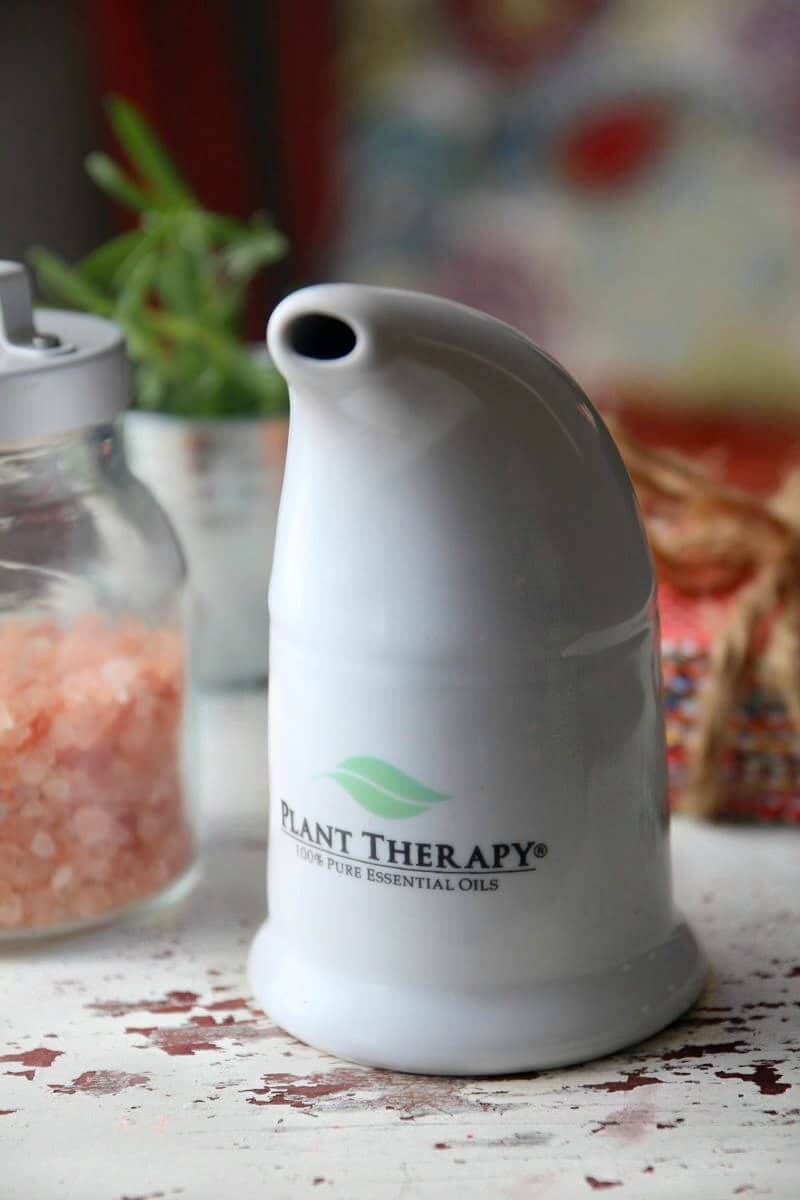
Can I use essential oils with my salt inhaler?
Halotherapy works best when the salt is very dry, so adding essential oils is not recommended. Essential oils may also gradually break down the salt, making the inhaler less effective over time.
What other ways can salt be used therapeutically?
Two of the most popular ways are warm salt socks for earaches (which makes a lot of sense if you consider the anti-inflammatory properties of salt) and the neti pot for clearing the sinuses.
The neti pot is a bit challenging for my kids, so they use a Nasopure “Nicer Neti” bottle when they are congested.
Where To Find A Himalayan Salt Inhaler
I use this salt inhaler from Plant Therapy and like it a lot. Because you’re placing the tip against your mouth, it’s best not to share an inhaler. So you might want to order one per family member who might be needing one.
Video + Instructions: How To Use A Himalayan Salt Inhaler
First, add the salt to the inhaler per the instructions that came with the one you purchased.
To use, hold the inhaler to your mouth and inhale deeply, then exhale through your nose. If desired take another breath through the inhaler, or you can alternate regular breaths with inhaler breaths. Most people use their inhaler for 10-20 minutes per day. Some people break that time up into five minute increments, while others do it all at once while watching a show or reading.
Video: How To Use A Himalayan Salt Inhaler
Sound like something you would like to try? You can order your Himalayan salt inhaler from Plant Therapy here.
Want more research-backed natural remedies?
No problem, I’ve created a free ebook for you – Kitchen Apothecary: 25+ Natural Remedies Using Ingredients From Your Pantry – as a gift for signing up for my newsletter. You’ll also get updates when I post about safe essential oils for pregnant/breastfeeding mamas, exclusive gifts and coupons (I was able to give away a jar of free coconut oil to anyone who wanted it recently!), plus other goodies.
Sign up using the form below.

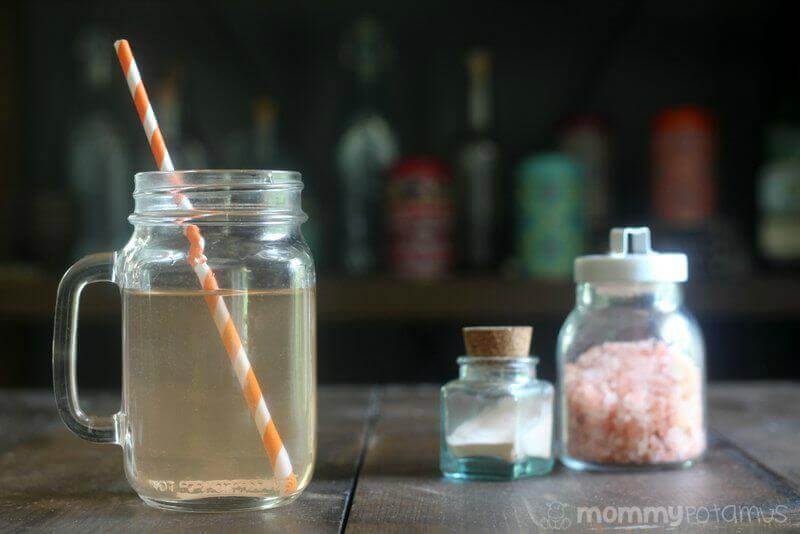
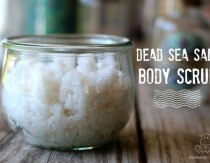
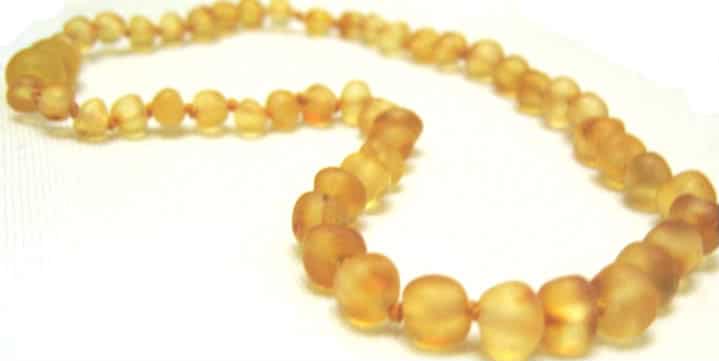

How long before you have to buy new salt? This looks incredible for my bio son who has asthma. Also for our adopted children who all suffer from PTSD so their cortisol levels I am sure are off the charts some days. I can’t wait to try this but need to know how long the salt lasts before replacing so I know what to order. Thank you so much Heather for your time.
Technically the salt will stay good until it’s gone, but most people refresh it after about 1-2 years.
Thanks, I needed to know the same thing.
OLY RAW SALT HAS TO BE ADAD OR WE HAVE TO ADD OTHER ITEM ALSO
Just salt 🙂
Can I use the salt in my nebulizer? I have COPD
I have Himalayan rocks can I break the rocks down with a hammer to use in my inhaler and how fine
Heather,
I use pink salt daily, but I have questions about it. Websites detailing the chemical makeup of the Himalayan Salt say it contains lead and mercury. The lead content seems high too at 0.10ppm. https://themeadow.com/pages/minerals-in-himalayan-pink-salt-spectral-analysis
Is this still healthy and safe to be consuming? I know many people concerned about this and would love some insight! Thanks.
That’s a great question, Caryn – one I have personally wondered as well. Here’s my perspective: Although lead is absolutely something I strive to avoid, it’s only possible to a certain degree because it’s a naturally occurring element that is found in soil, rivers, lakes, seawater and air. During the 20th century, our lead exposure increased due to the use of leaded gasolines and other industrial uses. However, many of those practices have been done away with and now our lead exposure is about 1/3 of what it was in 1970. (source)
According to a spectral analysis done by SPEX Certiprep labs, regular table salt has a higher concentration of lead than all the gourmet salts they tested, including Himalayan salt. (source) Mercury was either not detected or measured in “negligible amounts” for the samples. The amount found reported in the spectral analysis you linked to (which unfortunately does not cite a lab reference and therefore cannot be verified) is about the same as what is found in molasses and three times less than many herbs and spices according to the Handbook of Mineral Elements In Food. Tea comes in significantly higher at 0.764, but many other foods come in lower. (Yay!)
In other words, I think that analysis (if accurate) needs to be taken in a larger context. For example, one thing to consider is how much salt we consume relative to other sources . . . typically a lot less since no one sits down to eat a cup of salt. (Ewww)
I have MTHFR and have been using unrefined sea salt (Himalayan plus Celtic and others) exclusively for years, and when I had my lead/mercury (both organic and inorganic) levels tested a couple of years ago, my levels were extremely low. All that to say I am not personally concerned, but I do recommend sourcing from a reputable brand. Of course this is my opinion, not professional advice.
Thanks so much Heather!
it says on the plant therapy salt instructions to use half of what they provide in the inhailer and then throw it out every 30 days. I thought you can use it until the salt is gone? How would you know if the salt was compromised or became wet and you are inhailing mold or something else?
Hi Laura, I don’t think this was included with the instructions I received. I have reached out to Plant Therapy to ask about the reasoning behind the recommendation.
How much salt do you use and how often do you change the salt
Do you think a salt inhaler would help clear and help my lungs recover after 40 years of heavy smoking now thankfully I’ve kicked into touch
Do you think a salt inhaler would help clear and help my lungs recover after 40 years of heavy smoking
Heather what way were you able to text your mercury levels? Blood and hair tests aren’t accurate since it can’t test the levels in your organs
Hello!! I just got an inhaler as I’ve had asthma since I was born and wanted to try non synthetic stuff. It seems to be helping but I can’t help but feel like when I inhale, the salt tastes a little moldy… Is that normal you think? Can salt get moldy? I’m not quite sure what is going on and thought I’d reach out for some help! Thank you!
That doesn’t sound normal. I’d contact the manufacturer and ask for more information, and probably replace the salt.
It seems like maybe we could make one of these by creating a container to hold the salt, and punching holes in it for air flow. I’m envisioning a mason jar to hold the salt, and then one of the tops fitted with a straw, and a few extra holes punched around the straw. Does that make sense? Do you know of any reason this wouldn’t work? Thanks!!
I think you probably could make your own, but you’d want holes at the bottom so you could draw the air up as you breathe in.
I used a sippy cup and drilled holes in the bottom Put coarse pink salt in and sucked air through where the baby usually sips. Works great.
Am i reading that tne Himalayan salt does not have to be ground up, you can place a chunk in and breathe around it?
I’d like to ask if you’re aware of any blood pressure issues with this practice!
I am not aware of any but if blood pressure issues are an issue I recommend checking with your healthcare provider before starting any new wellness practice.
Take almost any water bottle, drill a bunch of small holes (smaller than the salt crystals) in the bottom, add course Himilayan Sea Salt and walah! I made mine in 5 minutes.
I took an old plastic vitamin bottle, used a con on the cob holder, and punched holes in the bottom. They were a perfect size. I just draw in air through the top and it works great. You can also shake the bottle and it will produce nice tiny particle you can inhale. There is a nice video on You Tube that shows you how. https://www.youtube.com/watch?v=BfgaSxm1IpM
I’m so excited to learn about this at home device!! Thank you! I have used salt therapy booths with great results…but I’m so excited to be able to get the therapy at home all the time! As someone who has suffered with asthma, I’ve found salt therapy to be extremely beneficial in relaxing my airways and even fighting colds!
So, the picture shows a device labeled with “Plant Therapy” and “essential oils”. Where does the salt come in? How do you put salt in the container, and what kind (fine, chunky, chunks)? I don’t see a link to the actual product, so I’m confused as to how and where one would buy one, as I’ve never seen one in a store.
Hi Rose, Plant Therapy Essential Oils is the name of the company that makes this inhaler. They mostly sell essential oils, but they also sell carrier oils, beeswax, and a few other products including these inhalers, which come with Himalayan salt. You can find them HERE.
Hi, Heather. I grew up near Wieliczka and I experienced first hand the power of salt therapy. Thank you for mentioning it.
How much salt do you put in the base of the inhaler?
Instructions are on the box.
My box came with salt but Doesn’t say how much to put in. I filled it. Does that seem right. Hope someone can answer this
Was wondering about cleaning. Do you just wipe clean and reuse it, each time?
You can’t open the inhaler. My husband uses it very often and cleans up the nozzle with alcohol on a q-tip.
I never heard about this but I am using Himalayan Salt and it has great health benefits with great taste. With Himalayan Salt, I also recommend Himalayan Salt products. I have been using salt lamps and they are super amazing. I got them from Saltean and I can see that how their warm glow has improved my irregular sleeping patterns. I am also looking forward to try this inhaler!
Best Regards!
You said that “Halotherapy works best when the salt is very dry…”
I haven’t read that anywhere else and I’ve been using Celtic Sea Salt because that’s what I have.
Do you think Celtic Salt will still be effective?
I use your site every week. Thank you for being so amazing!
I think Celtic Salt would probably do some good, but dry salt is preferred because moisture holds particles together instead of allowing them to drift into the air when the inhaler is used. Hope that helps!
any salt works
I use rock salt
Do you know if this is safe to use during pregnancy?
Himalayan salt lamp helps to improve a lot in my experience, i can now sleep well….. i also use the rock salt as a decor in our house wherein i put it a base then i realize some improvement in the air in our house…… i feel i breath a purified air in our house…… i also place one in our dining table….. i notice that some of the insect were gone and limited in roaming around the table…….. i happy to have may himalayan salt…. by the way, i also use the iodize himalayan salt for bath, i put the liquid soap in my hand then put little of iodize himalayan salt then i rub it from my face down to my body…. i feel that my body moisturize that gives i smoothness.
I was diagnosed with COPD a few years ago. A few months ago i read an article online about making a salt machine. I questioned whether it wasn’t a scam as it took a very long time before he got to the point which was to buy his book on how to build this machine. Then my noggin went to work. I realized I had a blow machine (a forced air furnace) and all I did was add some rock salt to the fan compartment. My lungs feel better and I do not hack and cough anymore to get the sputum out of the lungs. I just came back from the cottage and I noticed I was hacking and coughing again with corrected itself shortly after I got home. I should mention I Have a top of the line furnace (modulating) and run the fan constantly which runs at half the AC speed when not used to cool or heat the house. There is also an HRV and electronic air cleaner which also delivers fresh clean air
I have 3 sale lamps that no longer work… it is just a matter of changing a bulb inside? It looks difficult. I’m not very mechanically inclined 🙁
I just changed the bulb in a salt lamp today. It’s not difficult. Don’t be afraid of it. LOL The plastic electric component is just inserted into the wood base. I removed it with a slight twisting motion. You can easily insert a new bulb. I see your comment was made 6 months ago, but I hope this encouragement finds you.
I just purchased the inhaler today. It does not tell me how much salt to add to the device. How much salt do I use. Thank Yoyu…..ed criner
I’m waiting for someone to answer that too
for Dee. Yes these rock-salt lamps should just need a new “Pigmy-Bulb 15w” the same as the ones in your refrigerator of oven. Some have to be unscrewed from the bottom to release the lamp holder and other types are held in by springs that you can just pull the lamp-holder out but pull it out slowly as the springs can hurt when they ping back.
Hi, would this be safe for children to do as well? My oldest is three.
I personally see it as very similar to taking a deep breath of salty ocean air and am comfortable with my five year old using it, but please discuss any concerns you have with your family’s trusted practitioner.
How much salt does the Plant Therapy inhaler use? I have this inhaler but discarded the instructions and box.
is the Himalayan salt inhaler beneficial for Acid reflux
I made my own inhaler yesterday evening and used it a few times… My throat started getting very dry and through the night I developed a very sore throat and sore nasal passages my ears also feel iffy… I wonder if this is from the effects of the inhaler if maybe I over did it… Otherwise I don’t really feel like I’m coming down with anything .
Many people use their inhalers for 15-20 minutes a day, but for others that may be too much. Sounds like you are listening to your body and will find what works best for you.
Can you also use the inhaler with each nostril (cleaning it after using obviously) or just the mouth?
It’s only intended for inhalation via the mouth.
How much salt do you put in to the inhaler is it that full Sachs
Hi Kevin, your inhaler should arrive with instructions for how much to use. It can vary based on the size of the inhaler.
Hi Heather I have looked for instructions on the box although it tells you how to use the inhaler and benefits it does not tell you the quantity to use do you use the whole Sachs or portion of it does not even say size although the one I bought seems to be the bigger size. Regards
Kevin, did you buy the inhaler I link to in the post?
Yes bought it and was delivered this morning by pest.
If it’s the Plant Therapy one, yes use the whole sack.
I just got my inhaler. Filled it up and using it. Immediate relief from stuffed sinus due to allergy’s. THANK YOU !!!!
Just received my Himalayan salt inhaler no directions on how much salt to use would be helpful for that info
Hi Candy, did you order the one I linked to or another one?
Same here, ordered & received one, no instructions.
Just bought one, looking forward to using it, but the question is, how much salt to add to the inhaler, Thank you.
Where can I buy it
This is the one I bought.
Same question as some others…. no instructions. How much salt do I use. Should I fill it or leave some space for movement / shaking
Can more than one person in the same family use the same salt inhaler or do you recommend purchasing multiple?
It is recommended that only one per person.
I’m wondering how best to store the inhaler in the humidity of summer. I have a salt lamp and it sweats. I also received instructions with my plant therapy inhaler inside and on the box that says to replace if salt gets wet and/or after 30days.
Thank you for writing this! I’m wondering if there are symptoms that occur from detoxing when starting to use the inhaler. Is it common to experience increased congestion or a cough? If so, should one continue or stop using the inhaler?